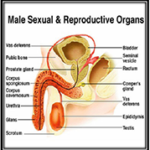
Erectile Dysfunction
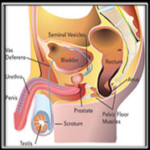
Premature Ejaculation
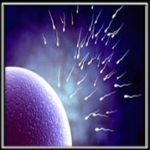
Dhaat Rog
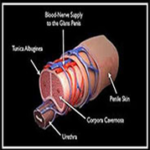
Penis Enlargement
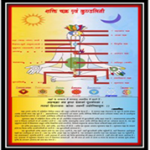
Nightfall
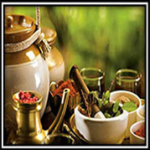
Ayurveda
Ayurveda and Covid 19
Top Ayurvedic sexologist in Mumbai say’s It is likely that Ayurveda possesses the longest clinical experience of any medical system known.
Ayurveda has recognized the extreme importance of sex in Human Life. Ayurveda regards that, sex is extremely necessary for our Happy, Healthy, Mental and physical life. while during Covid 19 situation there are many worries and concerns which made people tensed about there sexual life. lets get in to some deep knowledge about Ayurveda and Covid 19.
Introduction:
In late 2019, a new coronavirus ( not seen previously in humans ) was identified as the cause of human illness in China and given the name 2019-nCoV. ‘CO’ stands for corona, ‘VI’ for virus, and ‘D’ for disease. Formerly; this disease was referred as ‘2019 novel corona virus’ or ‘2019-nCoV’. The COVID-19 virus is a new virus linked to the same family of viruses as severe acute respiratory syndrome (SARS) and some types of common cold.
This novel corona virus; now known as Severe Acute Respiratory Distress or SARS – CoV-2, was identified as the cause of a cluster of pneumonias in Wuhan, Hubei province of China and has since spread rapidly to 213 countries affecting more than 11.8 million people worldwide and caused 5.44 lakh deaths till july2020.
By late January 2020, outbreak declared a public health emergency of international concern by WHO and US Centers for Disease Control and Prevention. It was declared as a global Pandemic by WHO in March 2020. The present Pandemic of COVID-19 has brought the so-called human activity to a standstill, and has forced the entire world to seek very seriously for its cause, mechanisms of pathogenesis and its solution.
Current available evidence for COVID-19 suggests that the causative virus (SARS-CoV-2) has a source closely related to bat-origin SARS-like corona virus but lab creation is being investigated. It is an enveloped RNA beta corona virus related to the Severe Acute Respiratory Syndrome (SARS) virus, and the virus has been shown to use the angiotensin-converting enzyme2 (ACE2) receptor for cell entry.
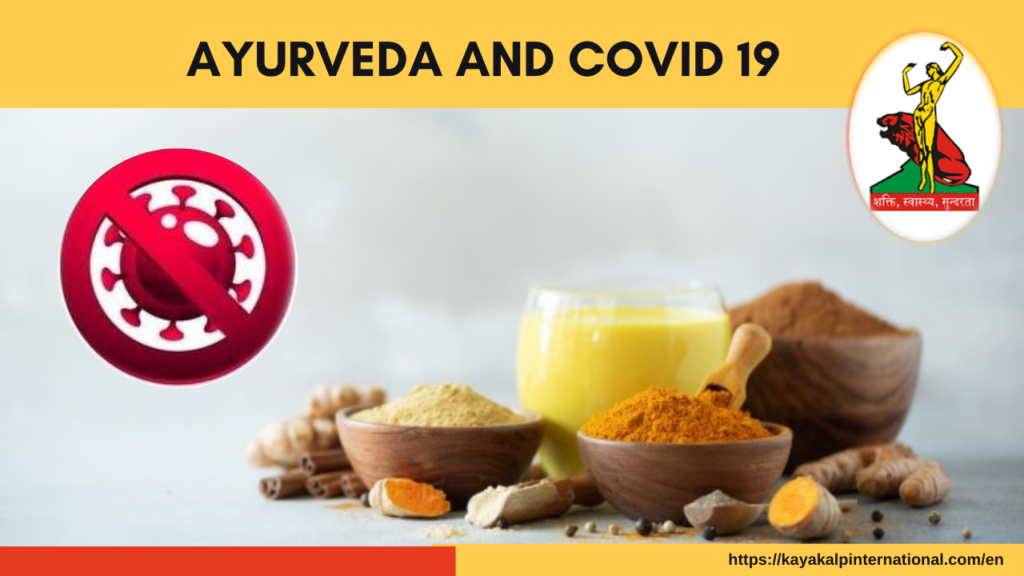
Cause and mode of transmission:
The persons infected by the novel corona virus are the main source of infection. Direct person-to-person transmission occurs through close contact mostly in closed indoor spaces, mainly through respiratory droplets that are released when the infected person coughs, sneezes, or talks. These droplets may also land on surfaces, where the virus remains viable. Infection can also occur if a person touches an infected surface and then touches his or her nose, or mouth.
Incubation period & time taken by virus to act in the body:
The median incubation period of COVID-19 is (2-6 days); most patients will develop maximum COVID-19 symptoms within 11.5 to 15.5 days. Therefore, it has been recommended to quarantine those exposed to infection for 14 days.
Patho-physiology:
The invasion of the virus to the lung cells, myocytes and endothelial cells of the vascular system results in inflammatory changes including edema, degeneration and necrotic changes. These changes contribute to lung injury pathogenesis, hypoxia-related injury, body immune response, increased damage of myocardial cell; also include intestinal and cardiopulmonary changes. The respiratory system is the primary system affected in SARS-CoV-2, and multiple infiltrates of both lungs may be present.
Diagnostic test for Covid-19:
Real-Time Polymerase Chain Reaction (RT-PCR) amplification of SARS-CoV-2 virus nucleic acid of nasopharyngeal swabs or sputum is needed to confirm the diagnosis.
Sign and symptoms:
Covid-19 affects different people in different ways.
Most common symptoms:
fever, dry cough, tiredness.
Less common symptoms:
Aches and pains, sore throat, diarrhea, conjunctivitis, headache, loss of taste or smell, a rash on skin, or discolorations of fingers or toes.
Serious symptoms:
Difficulty breathing or shortness of breath, chest pain or pressure, loss of speech or movement.
Clinical features include fever, cough, other upper respiratory symptoms, myalgia, diarrhea, loss of taste and smell, fatigue and dyspnea.
Loss of hearing, extreme weakness, dry mouth, skin rashes and irritation are among the new symptoms of COVID-19 variant strain as shown in the 2nd wave of corona virus.
Treatment of Covid19:
Currently, there is no cure available for COVID-19. All you have to do is take preventive measures, practice social distancing, wear masks, sanitize properly, and eat healthy food to boost immunity. Even if you have been vaccinated, you still have to practice social distancing to keep yourself away from the deadly virus.
The new variants are drastic, and as the research is still going on to treat this novel virus, you have to be extra careful with the way you live.
AYURVEDIC APPROACH OF COVID19: Top Ayurvedic sexologist in Mumbai
COVID-19 is taken as a Janapadodhwamskara or Maraka. A standard treatise in the Ayurveda science quotes that all though there are dissimilarities between every individual, there are certain factors which are similar among all. They are AIR, WATER, DESHA (Place of living), KALA (time/season). Vitiation among any of these factors manifests diseases having similar symptoms, which ultimately may lead to the destruction of country. Such manifested disease leading to destruction in mass is termed as “JANAPADODWAMSA or EPIDEMIC.”
Causation of Pandemics/Epidemic as per Ayurveda:
- Adharma activities contributing to destruction of sustaining principles of life or nature.
- Disturbance of air/Air Currents: Power Sector (Thermal)/Industrial pollution/Military activity related Pollution/Automobile and Aviation sector related air pollution.
- Disturbance to Ecology of water bodies: Pollution of water bodies/Sand mining from river beds/Unregulated damming/Contamination of Ocean beds etc can be included for contamination and unwanted changes in water ecological system of the environment.
- Disturbance to Land Ecology: Rapid Urbanization and huge constructional activity with non-ecofriendly materials/Over exploitation and destruction of mountains, forests & ecosystems. Destructions of other life forms like Animals/ Plants/ Birds and displacement from their natural habitats/ Usage of Non–biodegradable toxic materials like plastics pesticides etc is included.
Ayurvedic patho-physiology:
Activities of this kind (causative factor) vitiate and disturb the balancing forces of nature and gives rise to abnormal air currents, Cyclones, Floods, non-seasonal rains, extreme weather conditions etc. The vitiation of air currents, seasons, seasonal irregularities and disturbance of land and water ecology simultaneously induces or leads to vitiation of doshas (Cytokines) in humans, causing mass susceptibility to the same illness, while also affecting the oshadhis (food yielding plants), thus reducing the nutritive value and leading to under nourishment. When this combines with the causative factors causing agni mandya (sluggish metabolism)’ it leads to infectious diseases like COVID-19; probably such diseases can be more in future if corrective actions are not taken.
Ayurveda believes that even if there is a virus or bacteria, until there is no vitiation of doshas primarily in the body, none can infect the human system in a way that it manifests as disease. This fact is accepted by modern medicine in the context of tuberculosis, that although there is an infection, disease can happen only if immunity is weakened; this can explain the differences why some people affected by covid-19 show mild, or other show moderate symptoms while some are asymptomatic to the infection.
Doshas and rog marg of Covid-19:
Since the disease produces dryness (Dry Cough) and shortness of breath, it can be considered that vitiation of Vata dosha is present. The presence of high-grade fever shows vitiation of pitta dosha. Since the disease involves phupusa (lungs), the pathway of the disease can be considered as internal. The target organ for the disease manifestation is phupusa or lungs.
Ayurveda way of treatment:
The treatment aspect of Ayurveda can be understood in three categories–
1) Ahara: Langhana protocol [Light wholesome and easily digestible diet]
Based on severity of Amavastha (toxicity-infection) which can be grossly correlated with appetite. No curd, milk or raw foods or fruits or non-vegetarian foods are to be given; although non-vegetarian soups (rasa) are permitted and considered useful in vata jwaras(fever). The intake of snehas(fats) processed with deepana pachana dravyas(drugs promoting digestion and increase appetite) like ginger etc should be with good appetite(agni) and lightness in the body to pacify the vata dosha.
Fluid management: Hot water – ushna jalapana/Boiled and cooled water. Paniya – made with panchakola dravyas should be used for initial management in both phases.
Diet should include local and simple seasonal homemade food. Avoid junk food and oily-spicy food habits.
2) Vihara:
- Avoid unnecessary gathering
- Maintain distance from each other
- Maintain isolation
- Avoid sleeping during the daytime
- Avoid excessive physical activity including excessive walking or jogging among individuals under observation, to combat mental stress and anxiety.
- Application of lukewarm oil on forehead and scalp is known to reduce anxiety
- Shirodhara– A panchakarma procedure is known to reduce mental stress and anxiety can be performed
- A good sleep
- Do exercise according to the strength of your body
- Receive sunlight every day.
Yogasana can be practiced for positive health:
Pranayama– Particularly bastrika and kapalabhaati can be performed for 10 min each.
Asanas like– Bhujangasana, Vajrasana, and Padaangushtasana, can be performed for respiratory wellness.
All the above mentioned vihara well help to boost immunity of the body and maintain equilibrium of all the doshas in the body; i.e providing a natural defense against the novel corona virus.
3) Aushada– Abhyantara aushadi:
Acharya Charaka in his treatise, has explained that Tikta rasa aushadi should be given during Jwara kala. (Bitter taste dominant medications)
Accordingly, considering the prakriti of the individual, roga and rogi bala (body strength), kala (time and stage of disease) and adhisthana (body part involved) of roga the treatment is to be decided. Since the COVID-19 is vatapittaja vyadhi, the treatment is accordingly.
Mild illness/Mild pneumonia- Sudarsana Churna Kalpas; Amritarishtam; Tribhuvana kirti ras; Ananda Bhairava Rasam and other formulations that includes kirata, guduchi, katu rohini, musta , vasa etc.
Severe illness/severve pneumonia:
1.Dasamula katutrayadi Kasayam, if Swasa (SOB), Kasa (Cough), fever is Dominant.
2.Sudarsana Churna kalpas.
3.Amritarishtam/Vasakasavam (if Pittanubanda).
4.Tribhuvana kirti (if fever dominant).
All the above are used with Anupana (medium) of luke warm, guda or with ghritam in good appitite.
Preventive aushadi: Usage of Ginger, Turmeric, Long pepper, Clove, Garlic, Cumin, Coriander, Cinnamon, Basil leaves (Tulsi) in excess either along with food or alone
Ushna jalapana (Frequent intake of hotwater)– Can be added with Mint leaves and Coriander leaves, Fennel, Ajwain.
4) Aushada– Bahya– Urdhwagata shodana:
Nasya– Medicated Nasal drops can be instilled into both the nostrils every day and night. Since the pathway of disease is upper respiratory track, Nasya can be beneficial to combat the disease and to keep the channel clear for breathing.
Kavala graha– Keeping the medicated oil or kashaya (decoction) in the mouth for some time until the eyes starts watering. This keeps the oral cavity clean and strengthens the gums.
Gandusha– Gargling- The procedure helps to clear the sinuses and keeps the channel patent
Swedana– Sudation- Frequent inhalation of steam with addition of bronchodilating drugs like Vasa, Bharangi depending on roga and rogi bala. The procedure helps to clear the airways and aids smooth respiration.
Fumigating the house and surroundings periodically with drugs like guggulu, Nimba, Vacha.
Immunomodulators such as Ashwagandha, Guduchi, Yashtimadhu, Shatavari, and Amalaki can be provided to diseased persons to enhance their immunity.
Measures to restore human environment relationship according to Ayurveda: As the root cause of Epidemics is Adharma – Leading to Rudra Kopa (Fever); until we realize the oneness of life & learn to live in harmony with nature & creatures around us, we cannot have a complete prevention of Future Pandemics.
Hence Ayurveda advises us to practice Dharma in the form of.
- Satya: – Being truthful in all dealings & in one’s work.
- Daya: – Compassion on all living beings including animals, plants.
- Tapa: – Austerity.
- Japa:- Meditation.
- Homa& Devatarchana: – Measures to pacify the vitiated nature & its controlling energies, through the principles of Snehana of Prapanchika Vaayu through Vaidika Agni to restore the dynamics of air currents.
- Brahmacharya: – Self-control& seeking of Spiritual happiness
- Dedication to Spirituality
- Prayaschitta (Act to do things right) : – Actions undertaken to undo the wrongs towards nature and Life forms, with a view to repair Man’s Relationships with Nature and to help Nature in Healing Itself from the ravages of overexploitation caused by our Civilization & to rediscover living and growing in harmony with Mother Nature.
Conclusion:
COVID 19, a new strain of virus causing mortality all over the world, can be prevented with appropriate food intake, hygiene, and social distancing. Distancing one from the affected individuals is the key. Respiratory and personal hygiene is to be followed in order to protect oneself from the disease. Following the recovery, the individuals should not resort to daily routine activities until the individual regains strength and his agni bala (digestive capacity) is normal.
Preventive measures to reduce the chances of infection include getting vaccinated, staying at home, wearing a mask in public, avoiding crowded places, keeping distance from others, ventilating indoor spaces, managing potential exposure durations, washing hands with soap and water often and for at least twenty seconds, practicing good respiratory hygiene, and avoiding touching the eyes, nose, or mouth with unwashed hands. Ayurveda not only aims to heal the diseased but also to protect the health of the healthy individuals; hence, the measures applied for the treatment of disease should also be followed by healthy individuals to prevent the disease occurrence.
